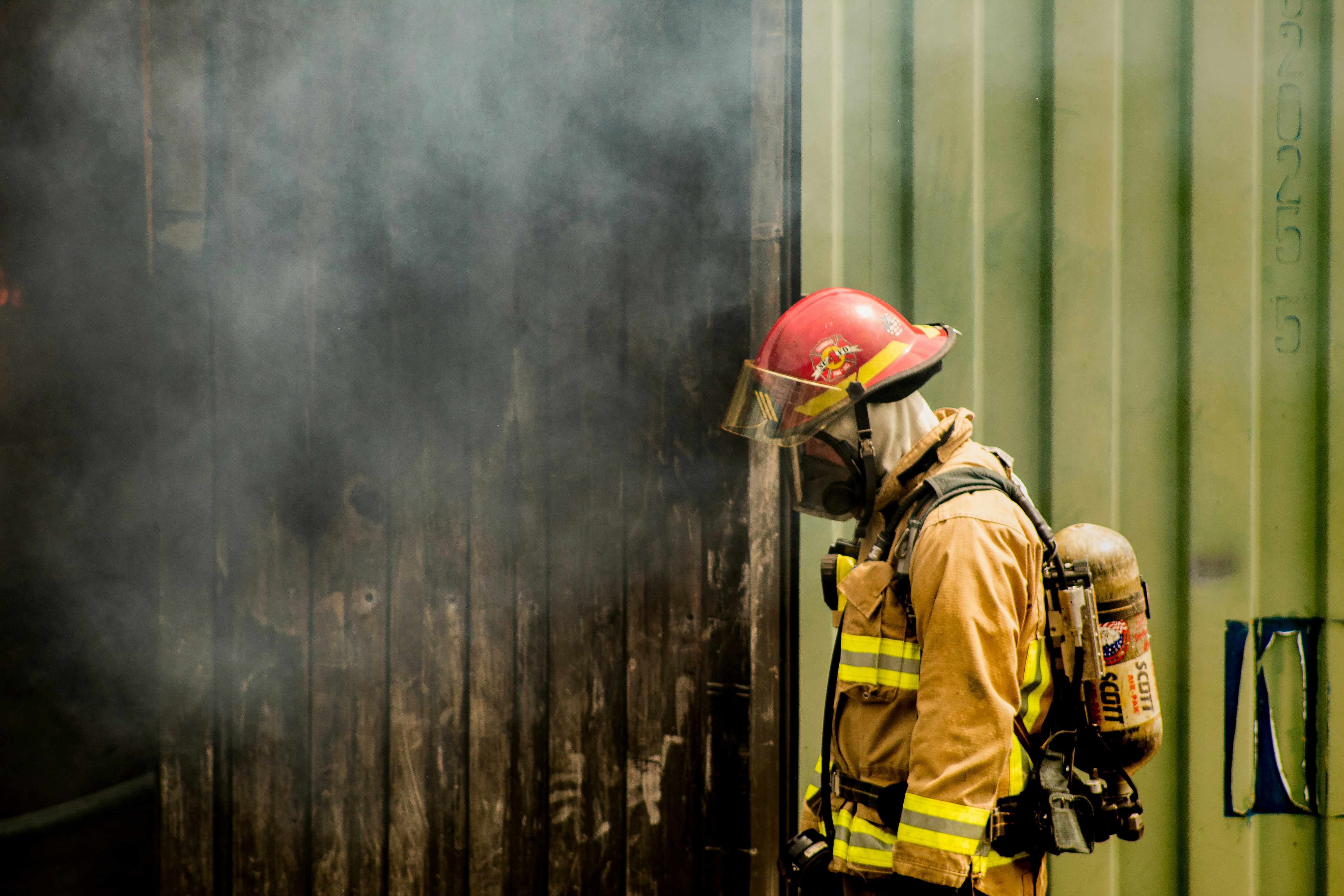Communities rely on these public servants now more than ever to answer emergency calls. It is imperative we shed light on the top safety issues still plaguing the firefighting industry. Ahead, we'll discuss some of the top safety issues that firefighters grapple with on a daily basis.
Challenges of Evacuating High-Rise Buildings
Evacuating large multi-story buildings comes with distinct difficulties related to human behavior and response. As per Performance-Based Fire Protection Engineering, occupants typically need at least two cues to prompt evacuation. The causes include smelling smoke and hearing an alarm. If only one cue is present, it may be discounted. Additionally, frequent false alarms can cause alarm fatigue, leading people to assume a signal indicates a test rather than an emergency.
During crises, individuals tend to prioritize helping others in danger over their own safety. While this displays community spirit, it has the potential to hamper orderly evacuations. Stopping to assist could slow the process and endanger evacuees as well as first responders.
Long-Term Health Risks
Firefighters face numerous long-term health issues due to the hazardous nature of their work. Cancers are commonly found in the digestive system, respiratory system, urinary system, mouth, and salivary glands.
A study was conducted by researchers at the University of Arizona Mel and Enid Zuckerman College of Public Health. They found that chemical exposures during firefighting may pose serious health risks. These exposures may elevate firefighters' risk of developing prostate cancer.
Firefighters encounter various chemicals through their work, and some of these exposures could heighten the risk of prostate cancer. The study, published in Environmental and Molecular Mutagenesis, examined this potential link.
The researchers believe that firefighters face a higher risk of prostate cancer. This increased risk is attributed to chemical exposures encountered on the job. The most prevalent cancer among males in America is prostate cancer. Prostate cancer diagnoses among firefighters are 21% higher than in the general population, potentially as a result of smoke and firefighting foam exposure.
Certain chemicals can cause epigenetic modifications like DNA methylation, contributing to cancer development. The study found that experienced firefighters displayed different epigenetic changes than new firefighters in regions that were connected to prostate cancer risk.
Lead author Margaret Quaid and researcher Jackie Goodrich from the University of Michigan led an analysis of gene methylation. They discovered experienced firefighters had distinct methylation patterns at chromosome 8q24, an area often altered in prostate cancer.
Per- and polyfluoroalkyl substances (PFAS), used in firefighting foam and consumer products, can induce epigenetic changes. PFAS levels were assessed. While exposures were similar between new and experienced firefighters in many departments, one PFAS chemical—PFOA—was linked to methylation differences.
The health risks revealed by this research are extremely troubling. In response, firefighters have begun taking legal action against manufacturers. Many firefighters have filed lawsuits, referred to as the AFFF lawsuit, against companies that produced firefighting foam containing PFAS chemicals. According to legal sources, these lawsuits are ongoing.
The lawsuits allege that manufacturers were aware of the risks posed by these chemicals. However, they did not adequately warn users or take sufficient steps to improve foam safety.
As per TruLaw, to facilitate the efficient handling of similar cases, courts have consolidated many of the AFFF lawsuits into multidistrict litigation (MDL). This consolidation aims to streamline the legal processes for cases making comparable claims.
Meanwhile, states across the U.S. are strengthening efforts to address dangers from PFAS in firefighting gear and foam solutions. The intensity of regulatory efforts reflects concerns over occupational exposure hazards revealed in scientific studies.
Heart disease is another major risk for firefighters due to stresses like extreme heat, toxic inhalation, and strenuous physical exertion on the job. Hearing loss may develop gradually through repeated exposure to loud noises at emergency scenes.
Respiratory issues often arise from breathing contaminated air and smoke during responses. Post-traumatic stress disorder and other mental health problems can impact firefighters who cope with emotionally traumatic situations. Substance abuse may be used as a coping mechanism as well. Firefighters also face risks like hepatitis infections from contact with hazardous fluids or blood.
Proper rehabilitation procedures for firefighters are essential, given the hazards of their work. A study published by NIH examined guidelines for managing health risks like overexertion and exposure to heat/cold and toxic gases. Standards development aimed to support firefighter recovery and well-being after operating in extreme conditions.
Significantly, this can reduce mortality, especially from cardiac events, which frequently cause on-duty deaths. Comprehensive rehabilitation protocols are, therefore, critically important.
Challenges of Rescue in Limited Spaces
Firefighters are renowned for their high level of strength, endurance, and resolve in demanding conditions. Tractel says they train vigorously to transport loads upwards of 150 pounds, including self-contained protective equipment and assisted individuals.
However, emergency scenarios exist where direct extraction carries grave difficulties or risks. Incidents involving collapsed multistory structures, enclosures like caves, or other situations with constrained access present unique challenges.
Rescuing victims from limited, tight areas like stairwells, narrow hallways, and elevators can compound distress. It becomes problematic for firefighters to maneuver rescue tools or make timely interventions where mobility is impaired.
While firefighters demonstrate astounding fortitude, certain complex emergencies may defy even their capabilities. Rescues requiring navigation through exceptionally cramped or degraded spaces can exceed normal capacity for payload transportation or aggravate harms endured by trapped persons.
FAQs
1. What is the most common danger that firefighters face?
A: One of the most frequent dangers firefighters deal with is strain or overexertion from their work. Fighting fires is physically demanding and can easily lead to injuries from lifting equipment or working for long periods of time under stress. Breathing in smoke and carcinogenic chemicals from fires also poses health risks.
2. What are the factors that increase fire danger?
A: Several conditions impact how likely a fire is to start and spread. Factors such as a history of previous fires in an area, available fuel from vegetation, and expected fire intensity all influence fire danger. Additionally, windy conditions that can carry burning embers, hilly or uneven terrain, and typical weather patterns for fires also play a significant role.
3. Does AFFF foam expire?
A: Yes, firefighting foam products like Aqueous Film Forming Foam (AFFF) have an expiration date. While foam can maintain its effectiveness for many years if stored properly, all firefighting foams are formulated to have a limited shelf life. Manufacturers provide guidance on expected lifespan, usually ranging from 10-20 years. This is when the foam is kept sealed in its original container within the specified temperature range.
While firefighters face immense courage and sacrifice in their duties protecting communities, it is incumbent upon all involved to reduce unnecessary risks wherever possible. Through diligent research uncovering threats like toxic chemical exposures, we can help shield firefighters from avoidable dangers.
Strategic litigation and regulation play a crucial role in addressing these risks. Prudent safety planning is also essential in tackling issues inherent to certain emergency contexts. With continued efforts across industries and disciplines, we must aim to better support firefighters' safety.






